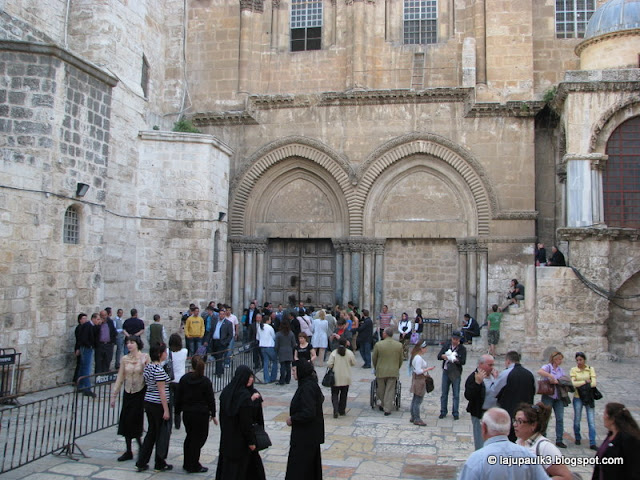Experience the most vibrant,amazing yet unpredictable strip of land on earth.
Saturday, December 25, 2010
Monday, December 13, 2010
VISITING JERUSALEM (MAUNDY THURSDAY & GOOD FRIDAY)-1st to 2nd APRIL, 2010.
It's my third consecutive Good Friday in Golgotha and 33rd visit to Jerusalem! What can I say. I Just want to thank God for enabling me achieve this marvelous feat. I have always entererd Jerusalem from south. Approaching Jerusalem from Beer Sheva is an amazing experience. While you climb the steep Highway 1 surrounded by pine-forests on each side, slowly emerges a city neighbourhood outlined by hills.The feeling perhaps fits with the Psalmists reference: "As the mountains [are] round about Jerusalem, so the LORD [is] round about his people from henceforth even for ever"(Psalms 125: 2). Once you are inside Jerusalem, it doesn't matter if the city is congested, crowded or noisy; what prevails is its powerful history and sacredness beautifully blended with the emotions of millions carried out through generations. All I can say is once you are in the Holy City, you are becoming part of it's eternity.
Brief Itinerary
01-04-2010
10.40-Sede Boker-Metropolin 60
11.30-Beer Sheva-Egged 446
14.05-Jerusalem CBS-Egged 60
14.30-Old City
14.35-Holy Sepulcher-18.00; Night at Gethsemane.
Stay at Hebron Youth Hostel, Old City.
02-04-2010
07.00-Holy Sepulcher-10.30
10.30-Old City (Via Dolorosa)
13.00-Jaffa Gate-Egged 20
14.00-Jerusakem CBS-Egged 470
16.00-Beer Sheva-Metropolin 60
16.50-Sede Boker
The Edicule, Containing the Tomb of Christ, Jerusalem
For those interested in the historicity of the Tomb of Christ and the Church of Holy Sepulcher, the following online link will be very helpful:
http://www.sacred-destinations.com/israel/jerusalem-church-of-holy-sepulchre
Unlike some other Christian sites in Israel, the authenticity of the 'Tomb of Christ' is well supported by historical documents and very strong reliable traditions. Underneath a large dome the Tomb of Christ, is enshrined in a large box-like structure called the edicule. The current structure was built in 1809-10 after the severe fire of 1808. It replaced one dating from 1555. The original 4th-century shrine constructed under Constantine was destroyed by the sultan Hakim in 1009.
According to the 4th Cent. Historian Eusebius (attested also by Jerome), Roman Emperor Hadrian built a statue of Jupiter on the site and it remained for 180 years (140-320 A.D.) When Constantine converted the empire to Christianity, he had the pagan temples dismantled, the earth removed and a church built over the spot (326 AD). The Christian community of Jerusalem held worship services at the site until 66 AD records Eusebius. Hadrian built the pagan Temple on the site regarded holy by Christians so as to claim the site for traditional Roman religion. All facts and traditions put together, this very site has a very high probability of being the 'Tomb of Christ'.
According to the 4th Cent. Historian Eusebius (attested also by Jerome), Roman Emperor Hadrian built a statue of Jupiter on the site and it remained for 180 years (140-320 A.D.) When Constantine converted the empire to Christianity, he had the pagan temples dismantled, the earth removed and a church built over the spot (326 AD). The Christian community of Jerusalem held worship services at the site until 66 AD records Eusebius. Hadrian built the pagan Temple on the site regarded holy by Christians so as to claim the site for traditional Roman religion. All facts and traditions put together, this very site has a very high probability of being the 'Tomb of Christ'.
Inside, the edicule are two small rooms. The first is the Greek Orthodox Chapel of the Angel, which features an altar containing a piece of the stone rolled away by angels at the Resurrection. The inner room is the actual Chapel of the Holy Sepulcher-the tomb of Christ.
Subscribe to:
Comments (Atom)





















































